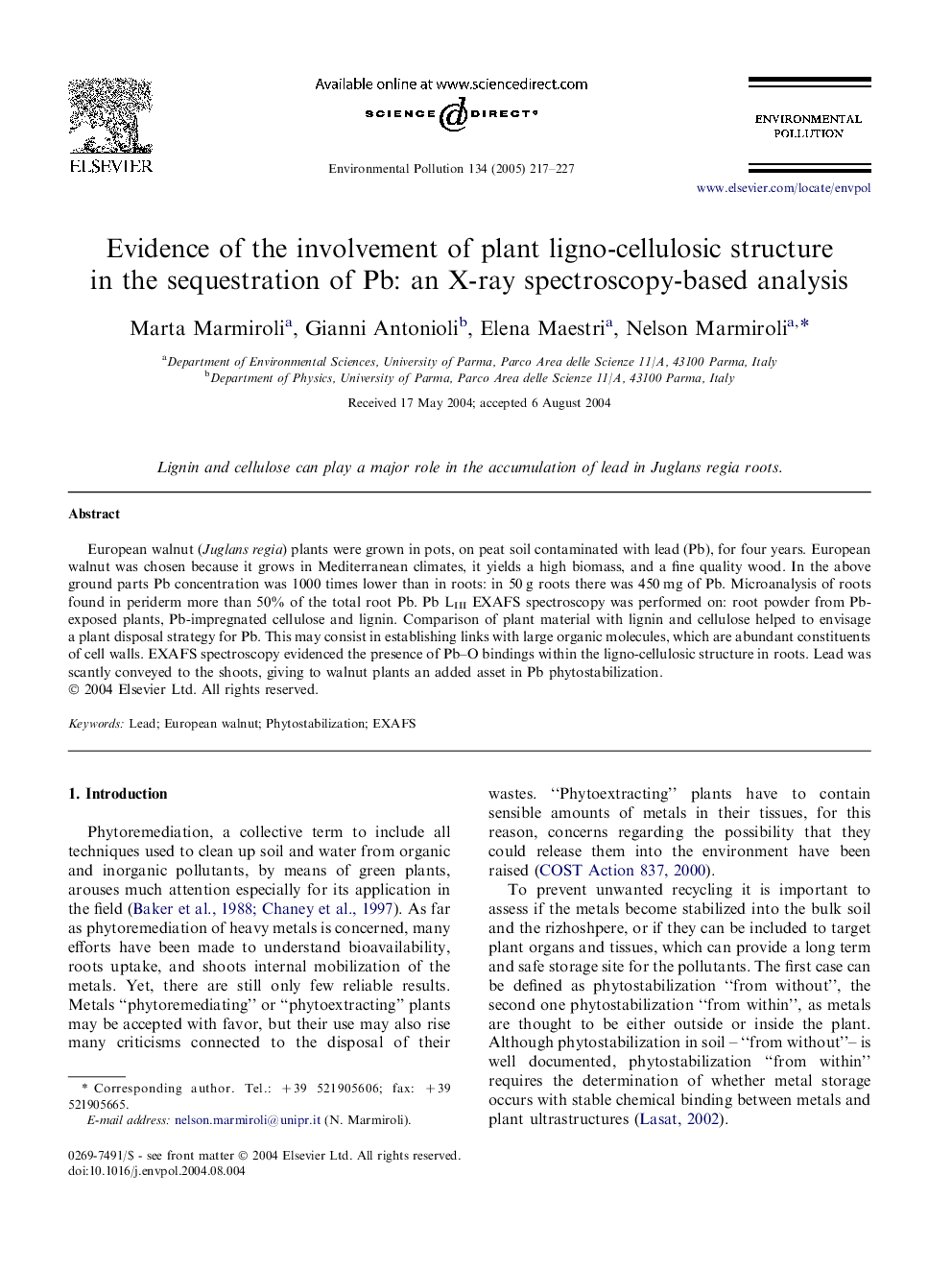| Article ID | Journal | Published Year | Pages | File Type |
|---|---|---|---|---|
| 9456571 | Environmental Pollution | 2005 | 11 Pages |
Abstract
European walnut (Juglans regia) plants were grown in pots, on peat soil contaminated with lead (Pb), for four years. European walnut was chosen because it grows in Mediterranean climates, it yields a high biomass, and a fine quality wood. In the above ground parts Pb concentration was 1000 times lower than in roots: in 50Â g roots there was 450Â mg of Pb. Microanalysis of roots found in periderm more than 50% of the total root Pb. Pb LIII EXAFS spectroscopy was performed on: root powder from Pb-exposed plants, Pb-impregnated cellulose and lignin. Comparison of plant material with lignin and cellulose helped to envisage a plant disposal strategy for Pb. This may consist in establishing links with large organic molecules, which are abundant constituents of cell walls. EXAFS spectroscopy evidenced the presence of Pb-O bindings within the ligno-cellulosic structure in roots. Lead was scantly conveyed to the shoots, giving to walnut plants an added asset in Pb phytostabilization.
Keywords
Related Topics
Life Sciences
Environmental Science
Environmental Chemistry
Authors
Marta Marmiroli, Gianni Antonioli, Elena Maestri, Nelson Marmiroli,
